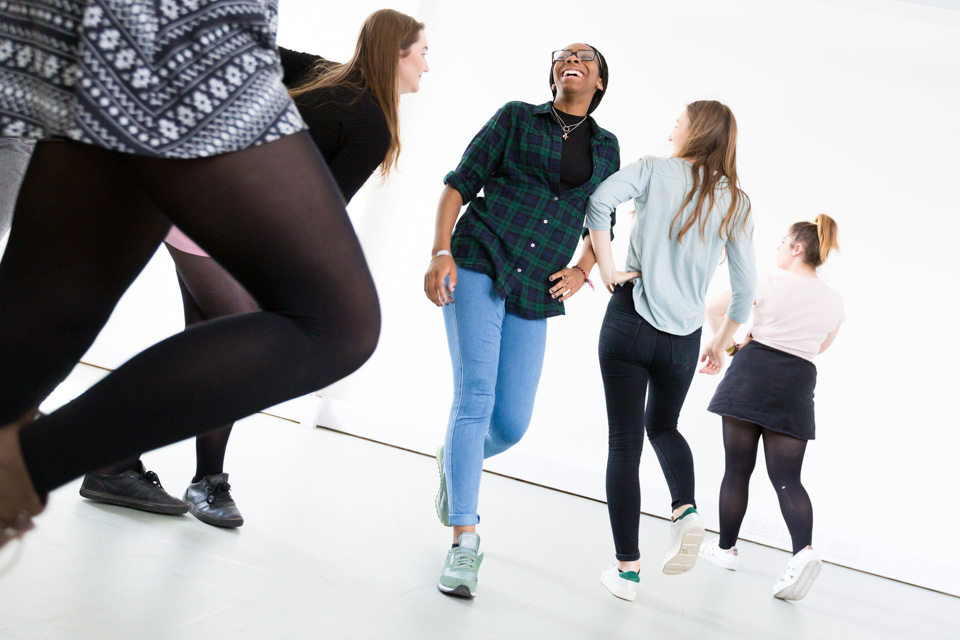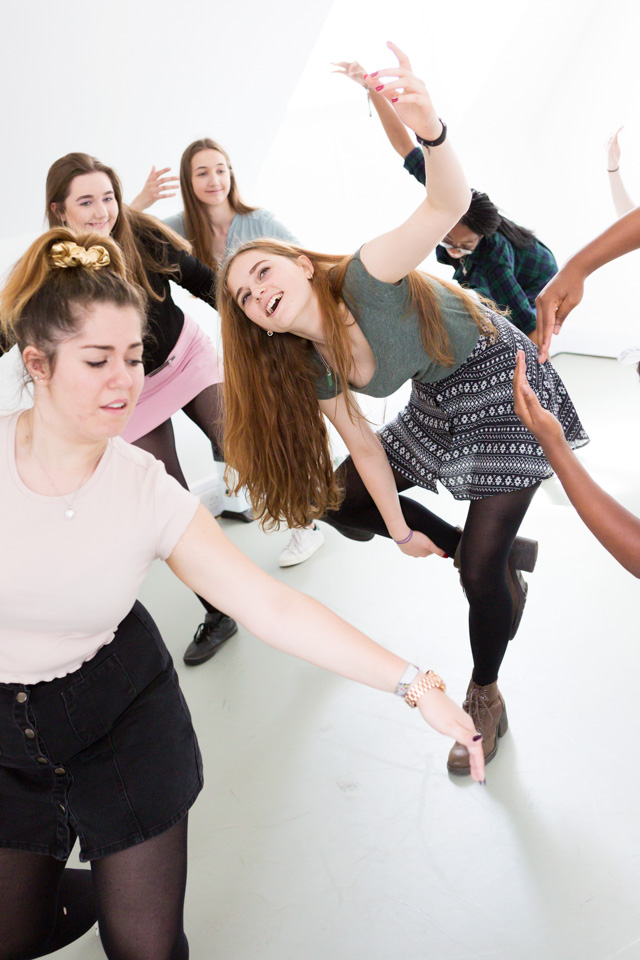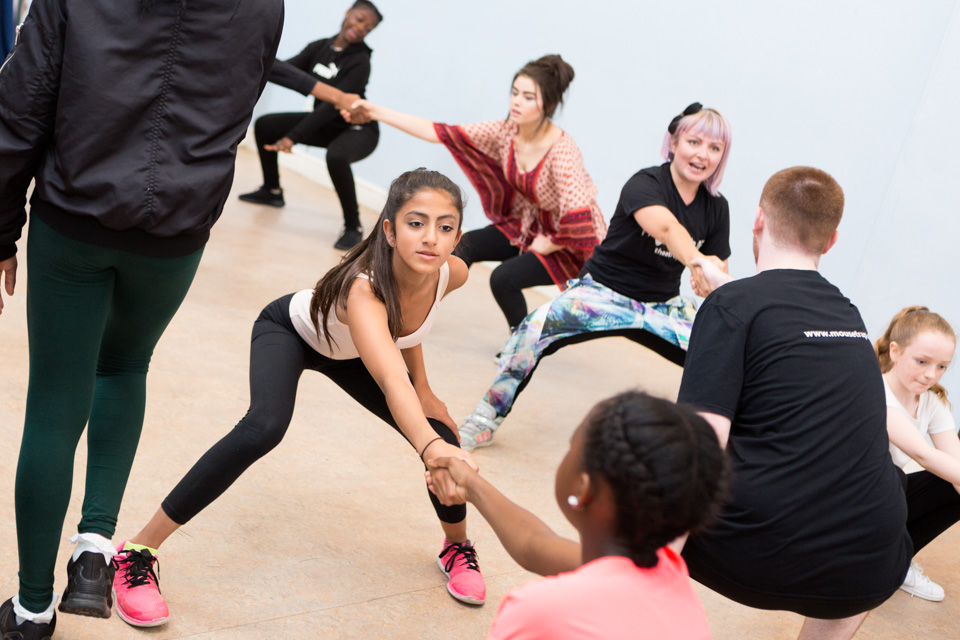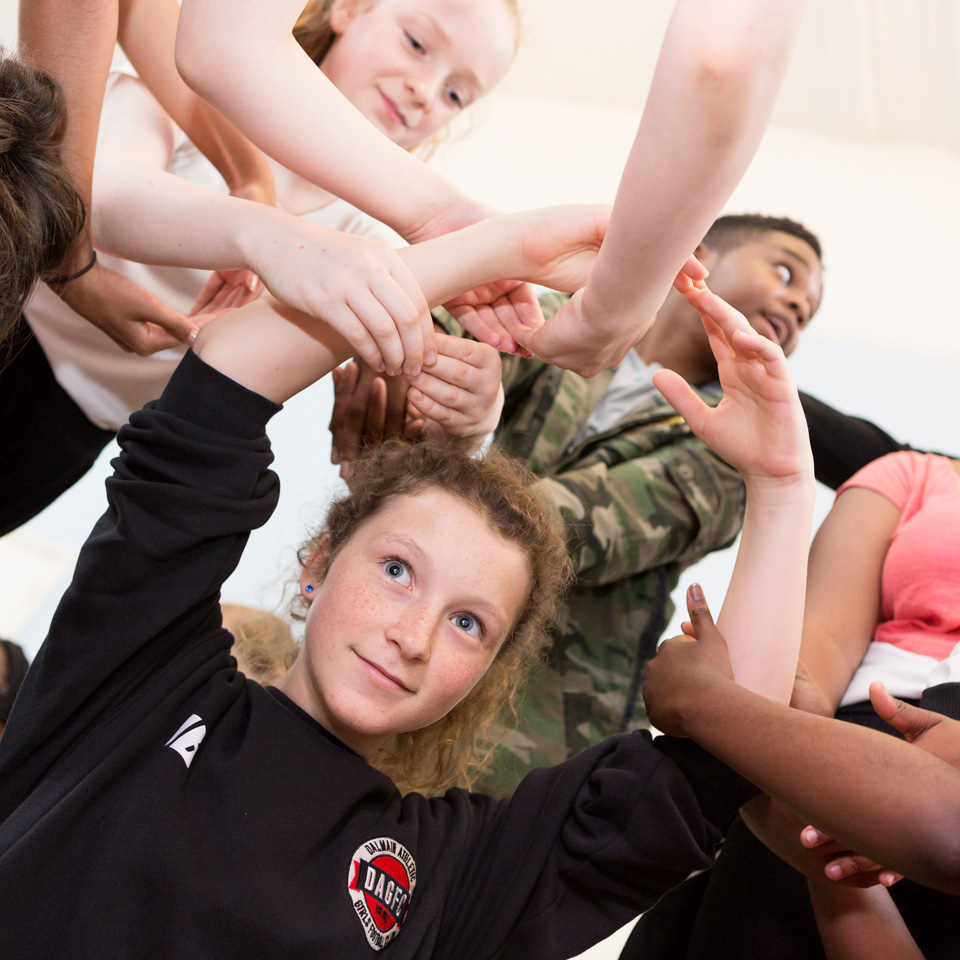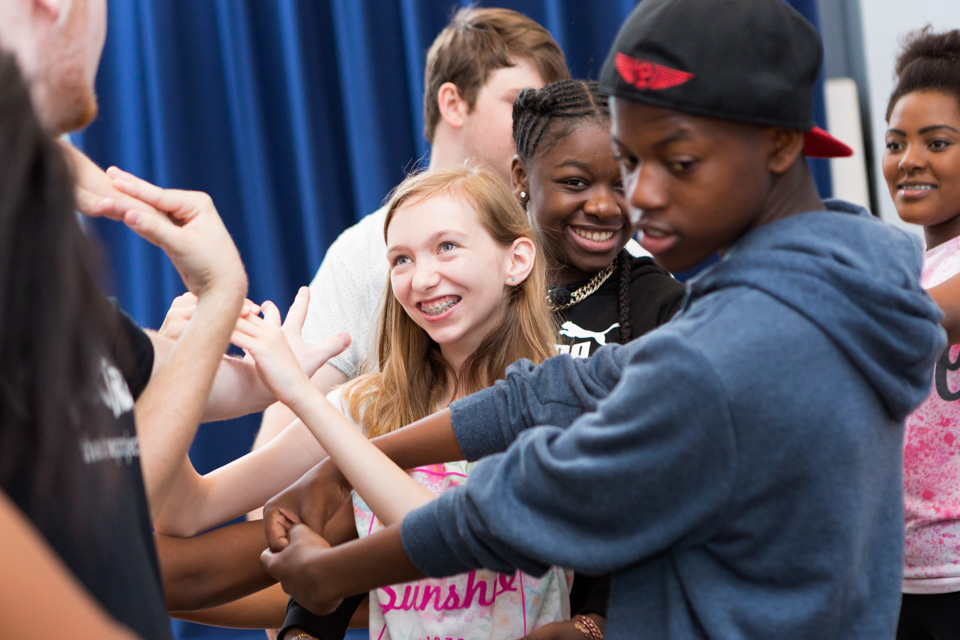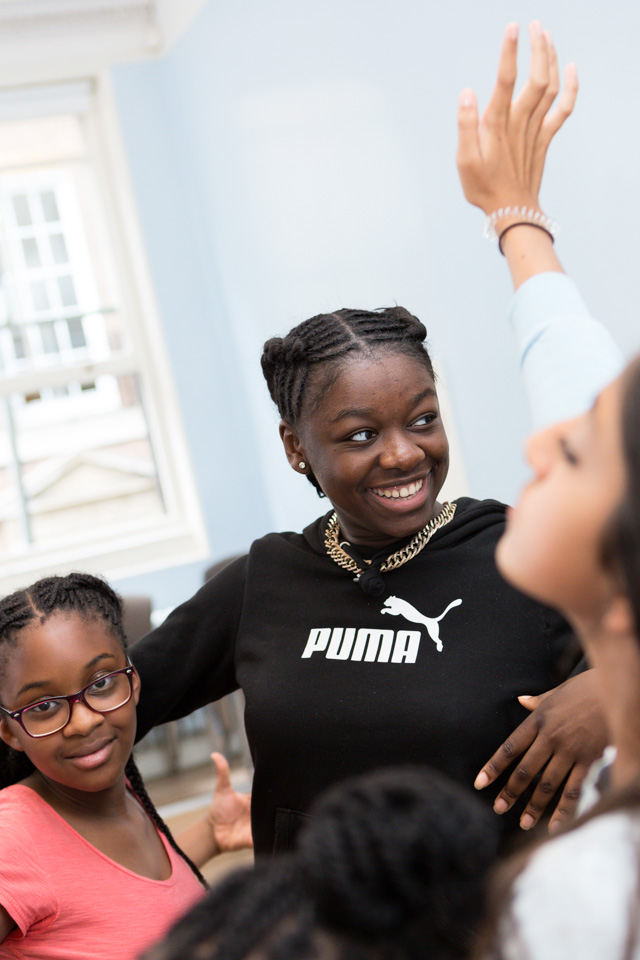Tomorrow's People
I was commissioned to take portraits for Tomorrow's People, a charity helping young people into work:
Mousetrap
Mousetrap Theatre Projects' mission is to get young people involved in theatre, and their focus is on disadvantaged youth (be those learning, economic or social difficulties). One of my favourite clients, they tirelessly work to offer a wide range of opportunities and activities, alongside regular education within schools and colleges.
I covered two workshops for them recently. The first was an "Insight" session, a 90 minute pre-show workshop for students to get inside the creative process of putting a show together (here, for Brecht's Threepenny Opera at the National Theatre):
The other was coverage of part of the "SummerStage" program, where students work with professional dance and theatre professionals to put together and perform a show in the West End:
Property brochure
My post a few weeks back on an advertising image for Land Securities reminded me of a shoot from back in 2014. I wasn't blogging regularly then; I neglectfully buried the images in a grid as part of a round-up post of my year's work. So it's a TBT.
The brief was to spend time around the central London areas of Aldgate, St Pauls, Fleet Street and Chancery Lane, where Land Securities has properties and ongoing developments. They required imagery of the buildings, shops, interesting asides, key sights -and the general feel and atmosphere - for a brochure and some other materials.
I loved this shoot - I had freedom over my schedule and route, and while there were some required shots, I was mostly left to my own devices as to what else to capture and how to photograph it. Apart from seeking a few permissions, I barely spoke to anyone for two days!
I'd done a couple of recces to plan the route, locate the main areas of interest, and see how the light was for the more architectural and wider scene shots at the different times of day. But still, so often I found myself winding around and double-backing on myself, getting lost around backstreets and frequently sidetracked with details I'd not noticed. I delivered a small library of photos in the end, very much an interwoven document of the area, but with a number of shots which I felt stood alone.
Here's a (small-ish) selection of some of my favourite ones - enjoy!
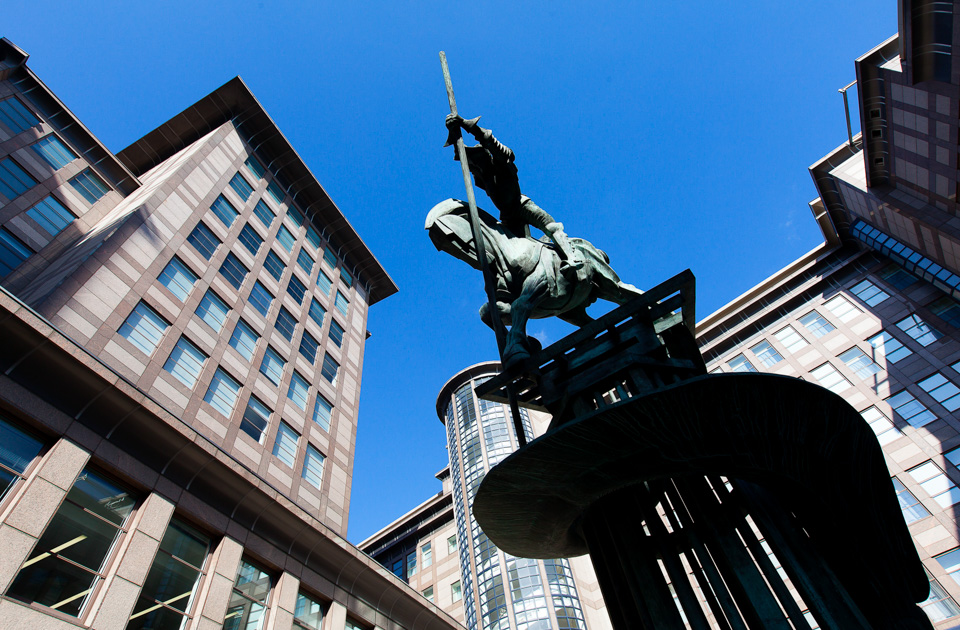
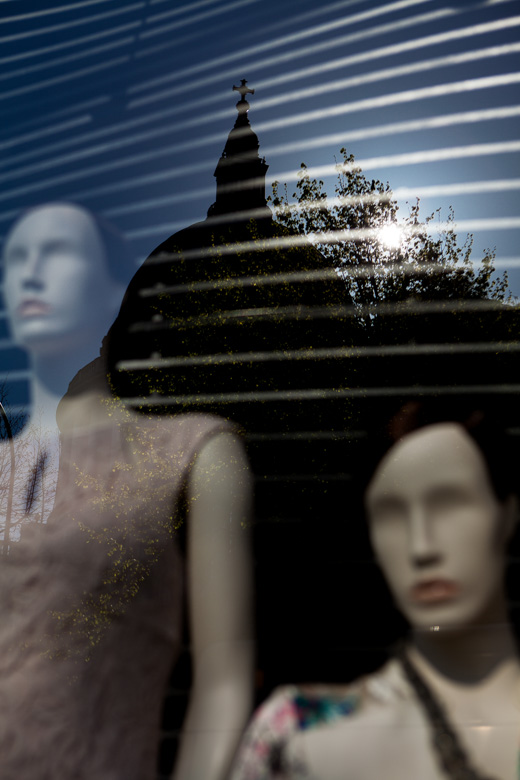
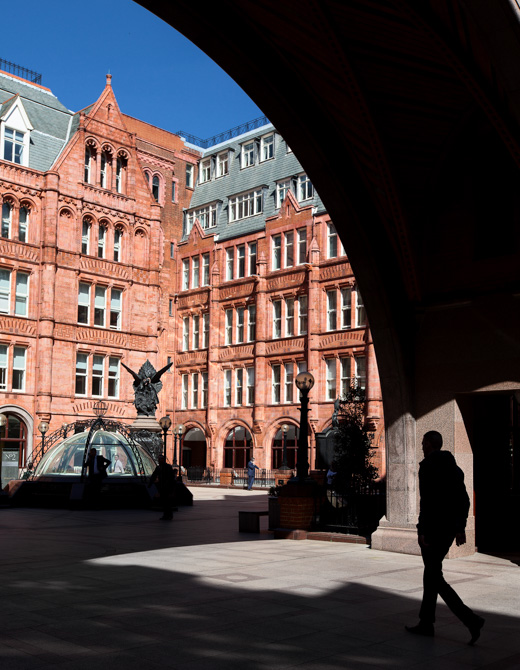
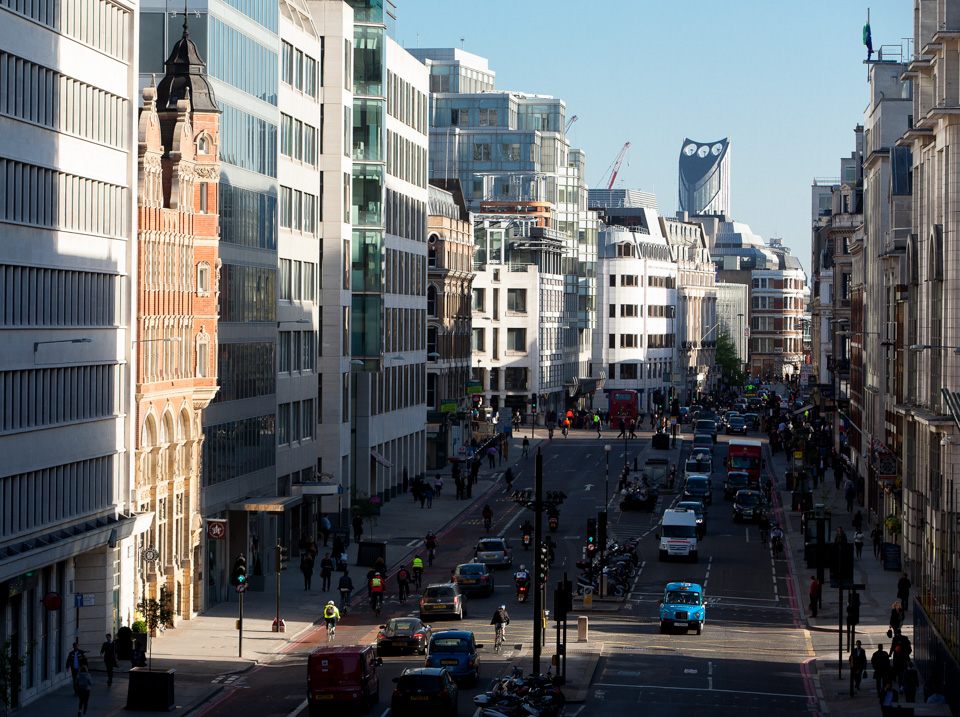
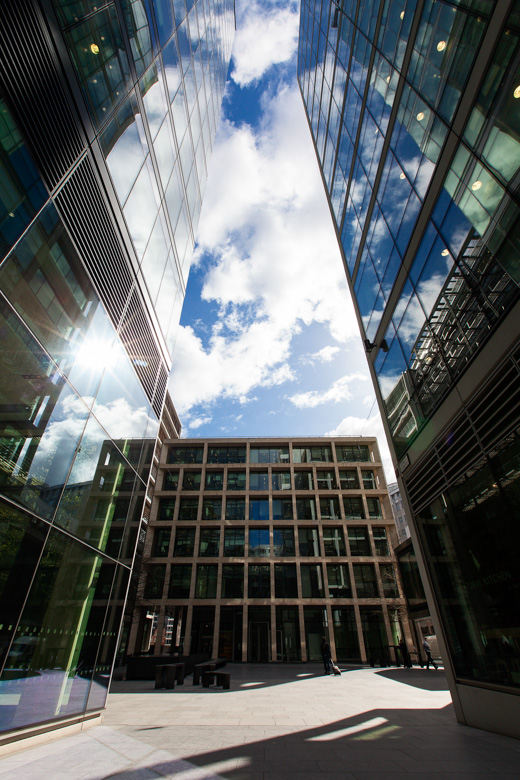
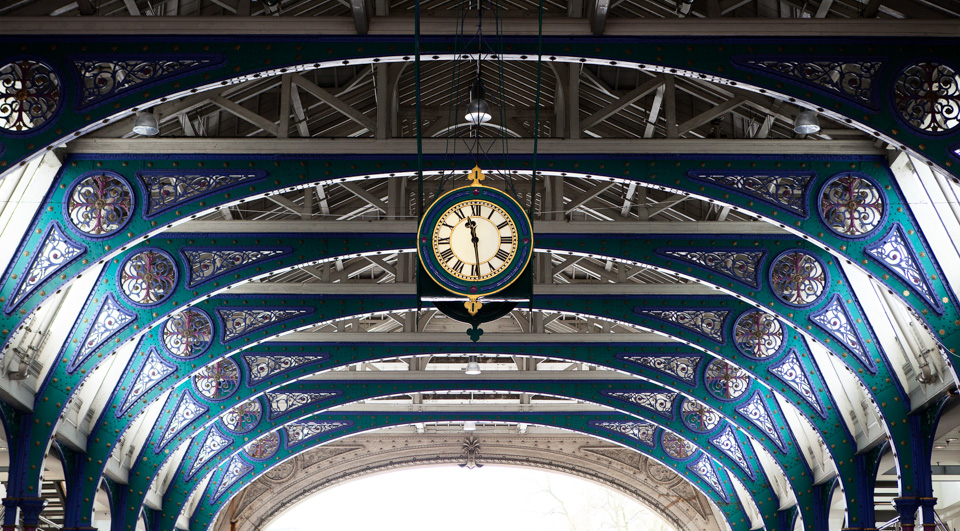
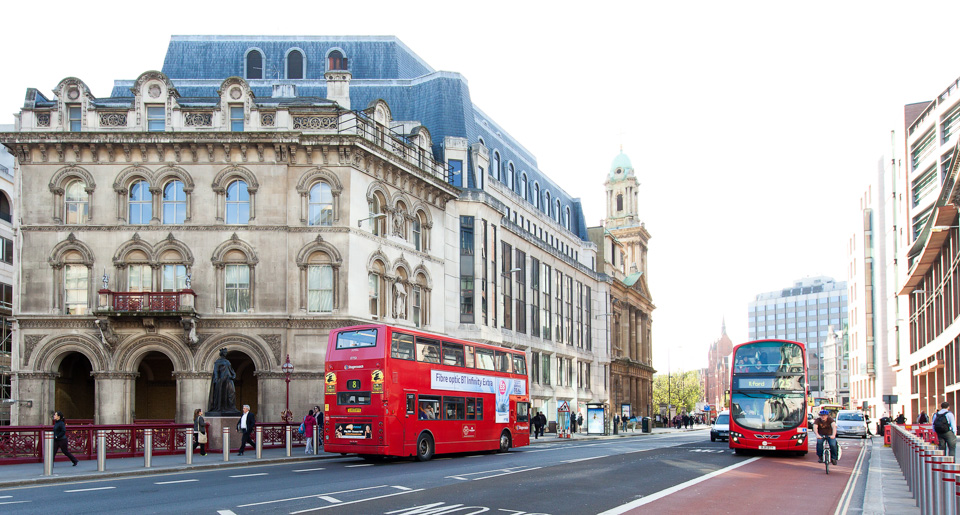
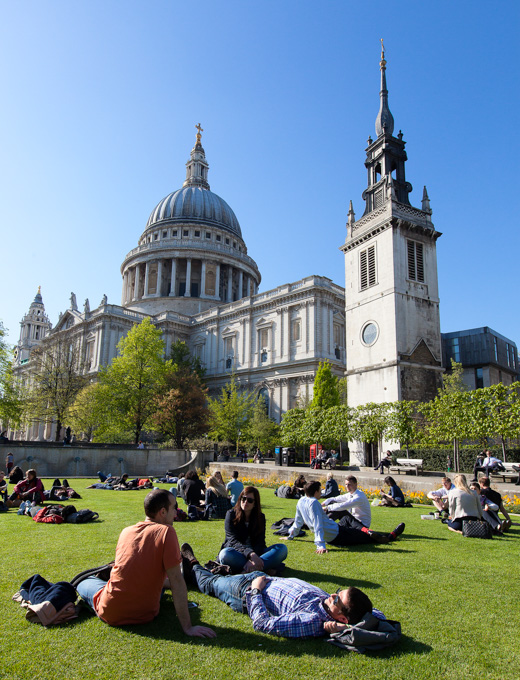
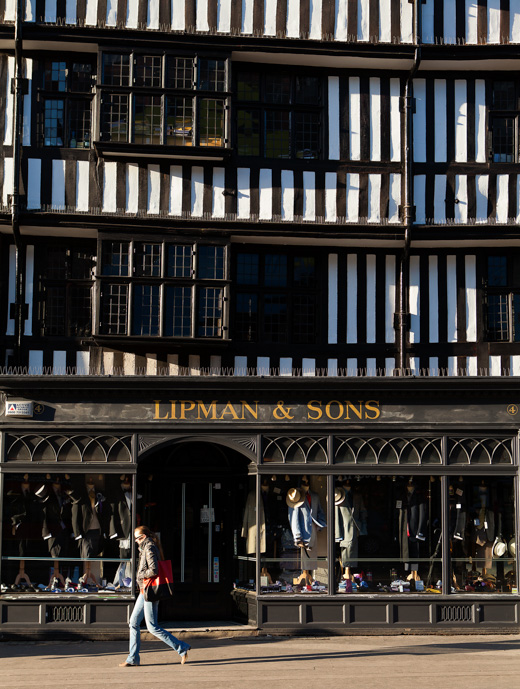
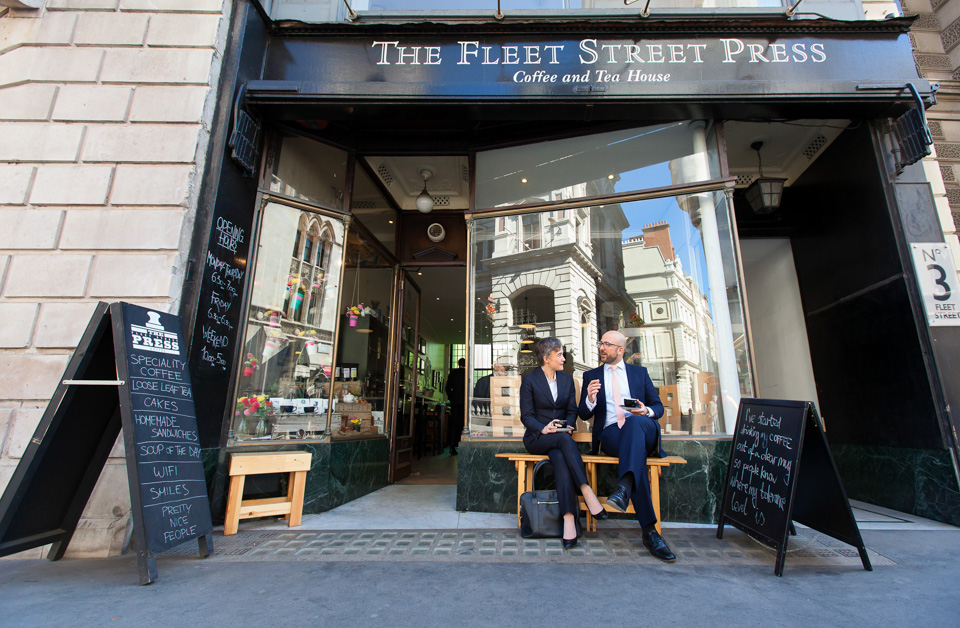
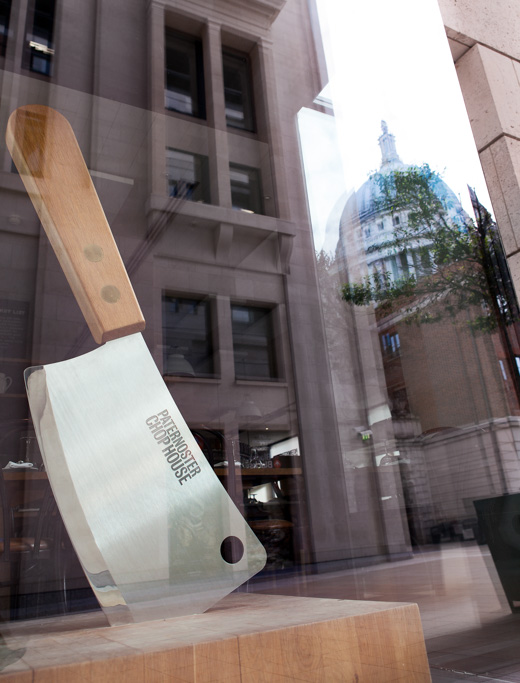

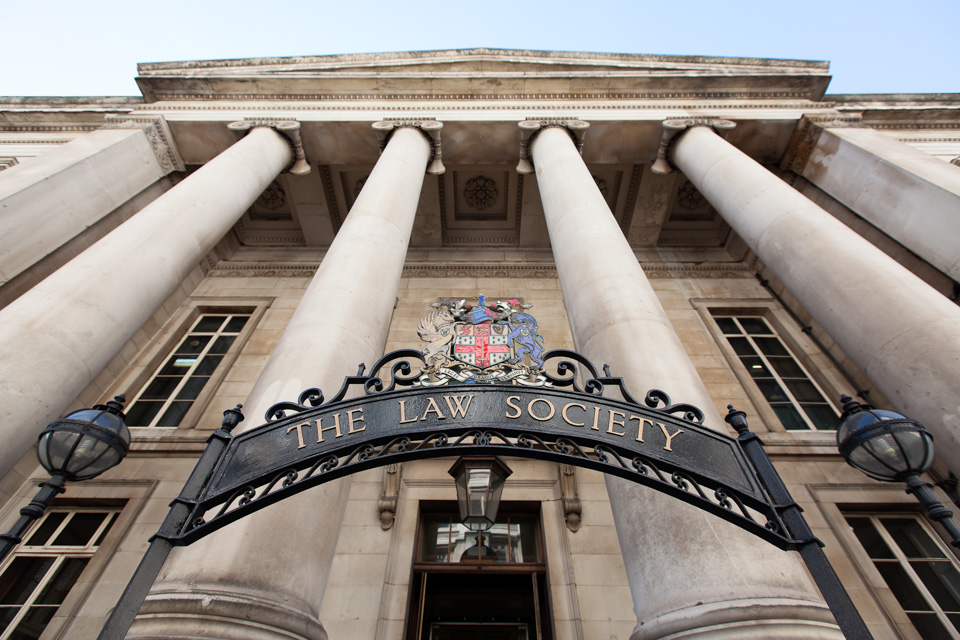
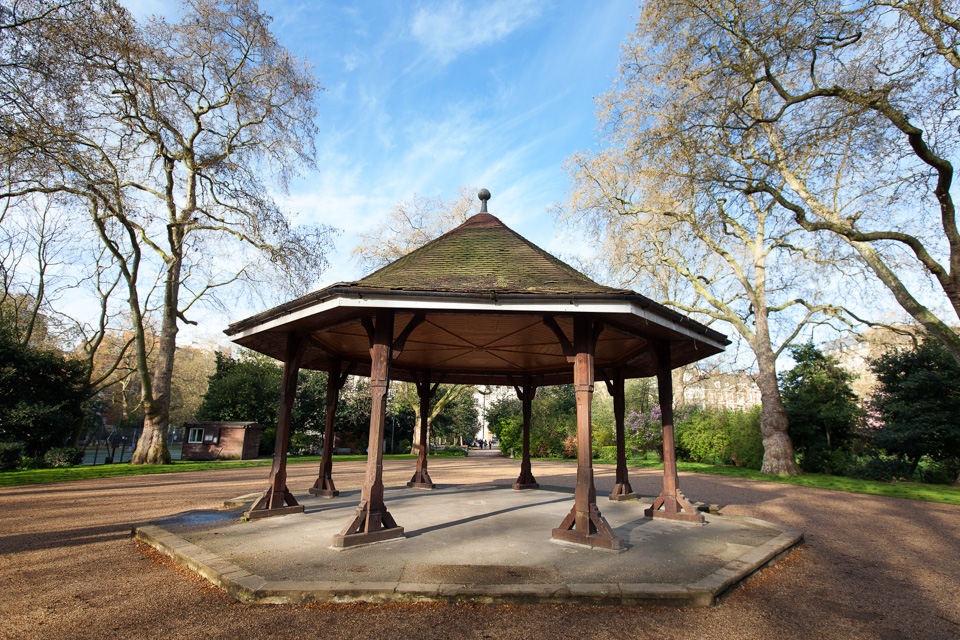

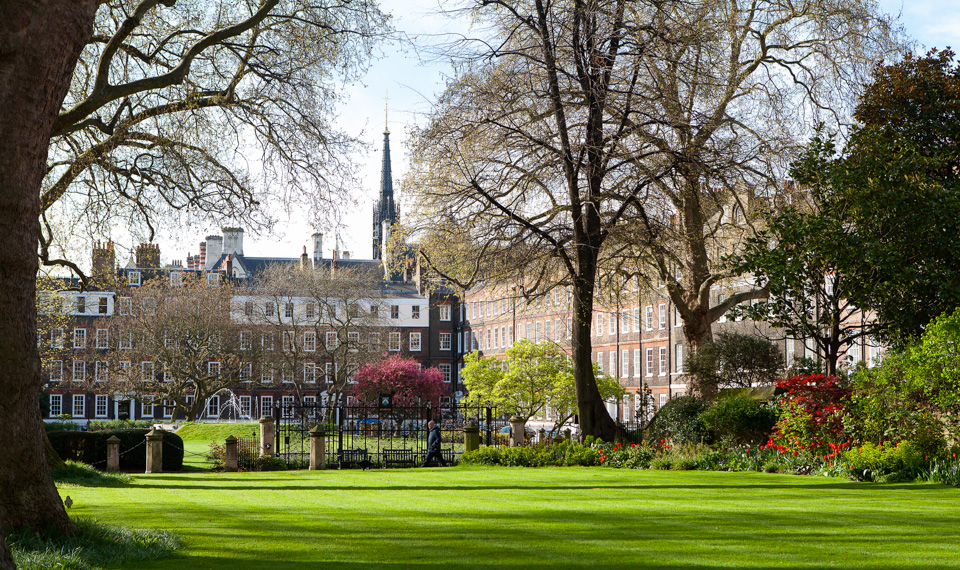
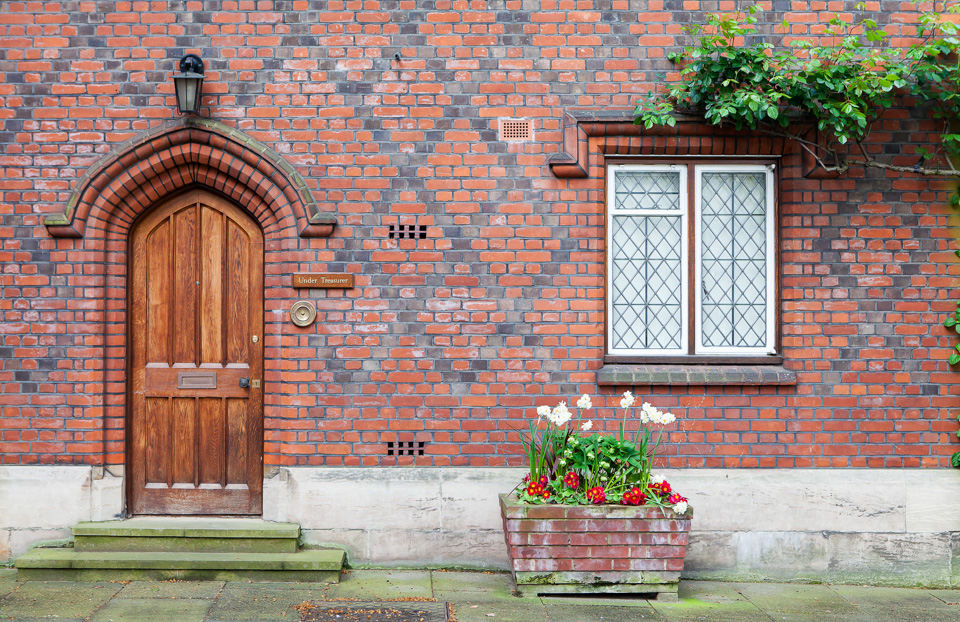
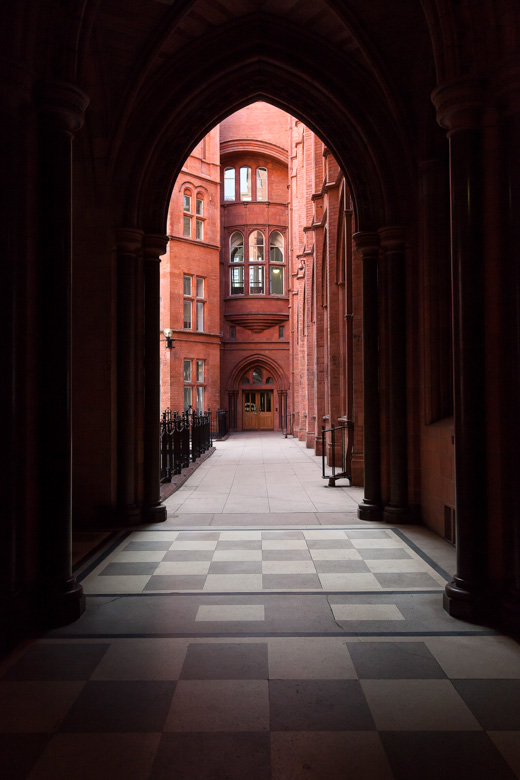


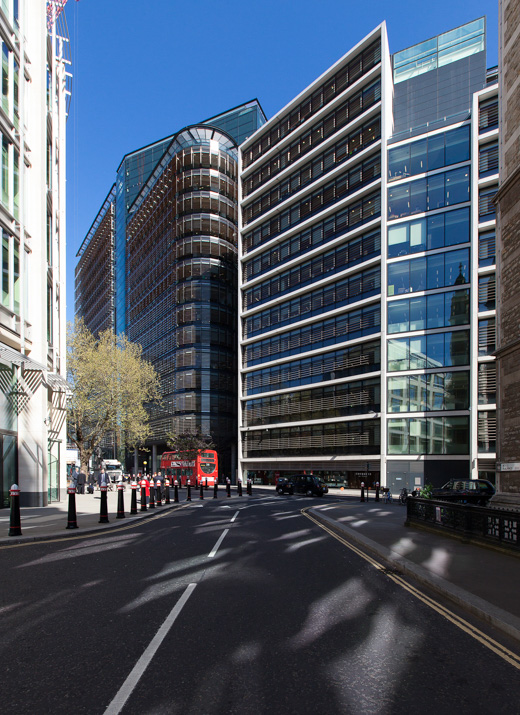
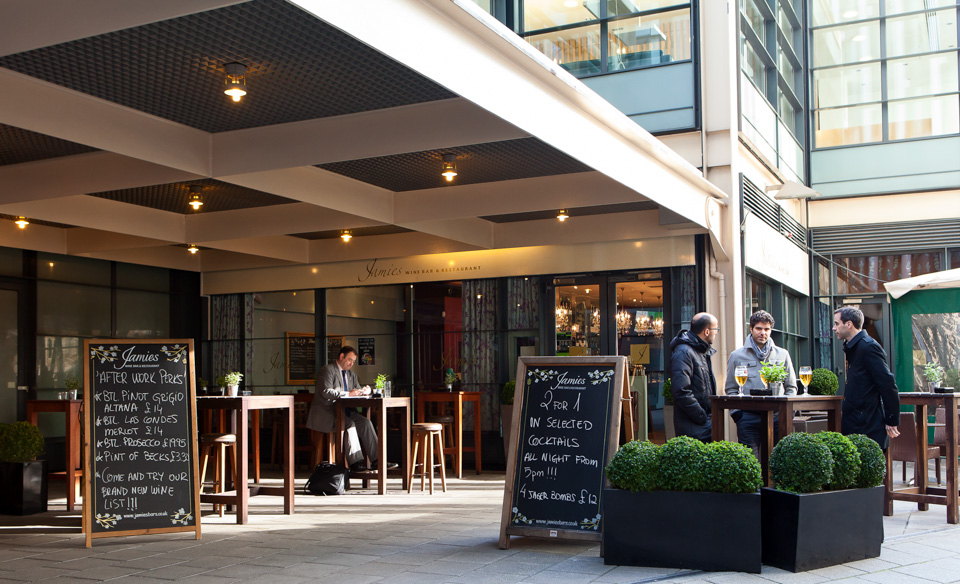
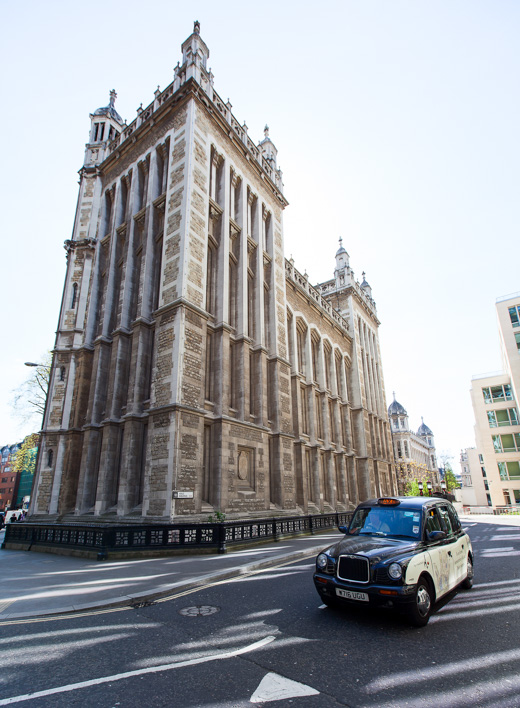

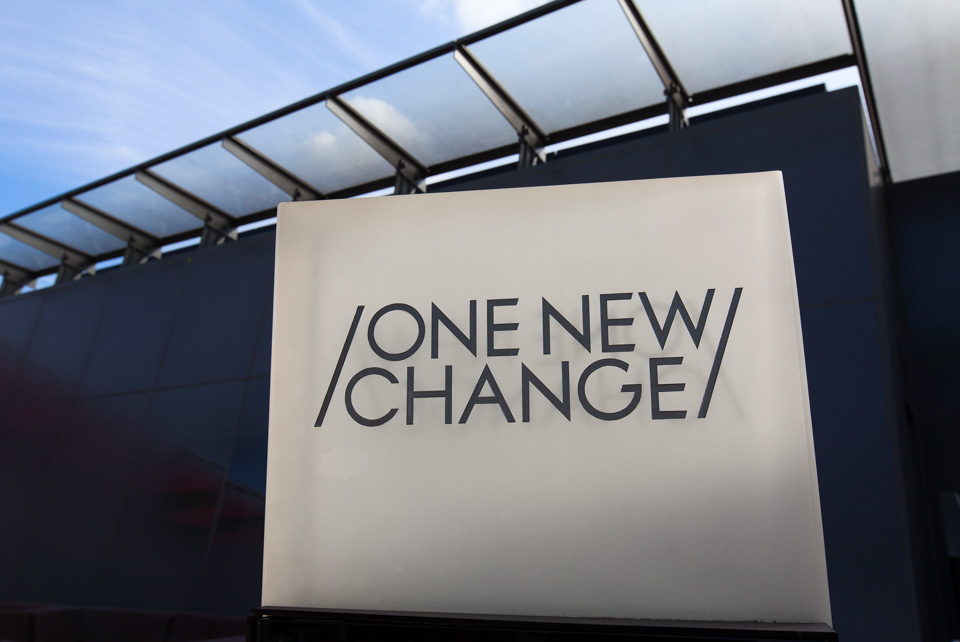
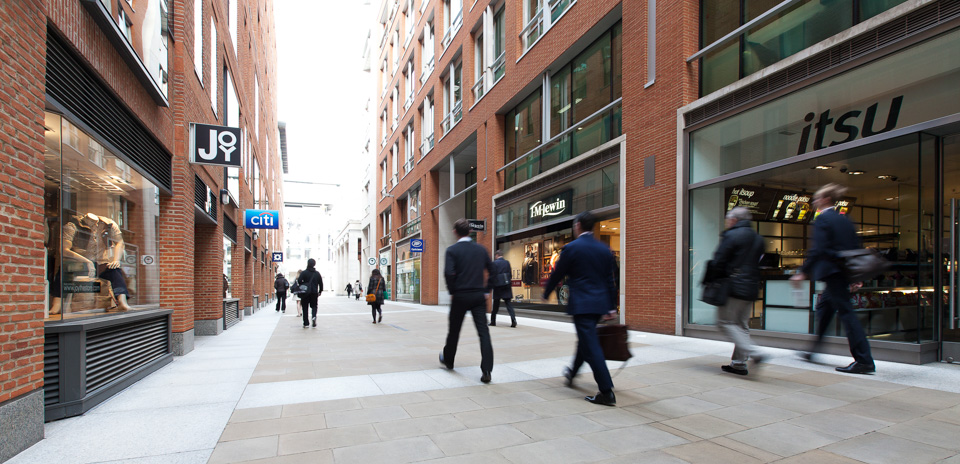
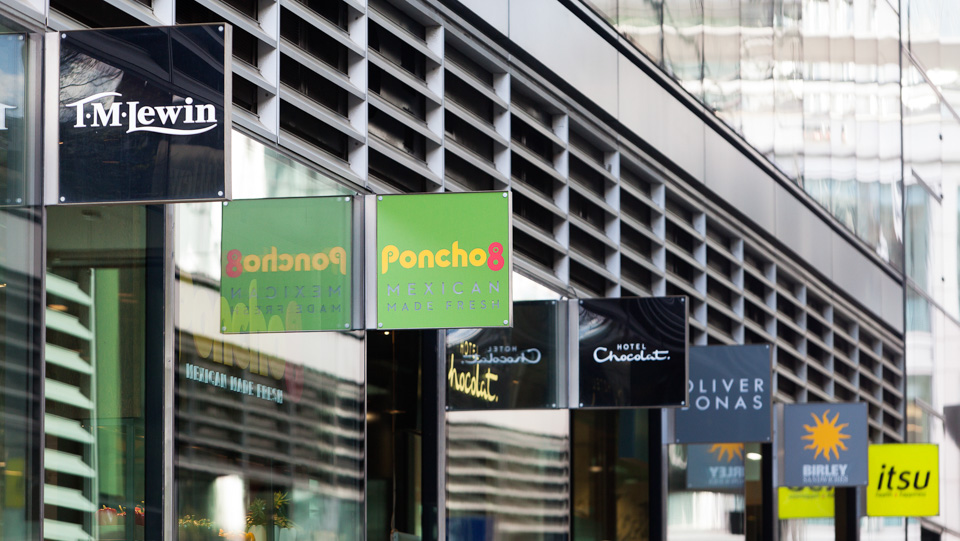
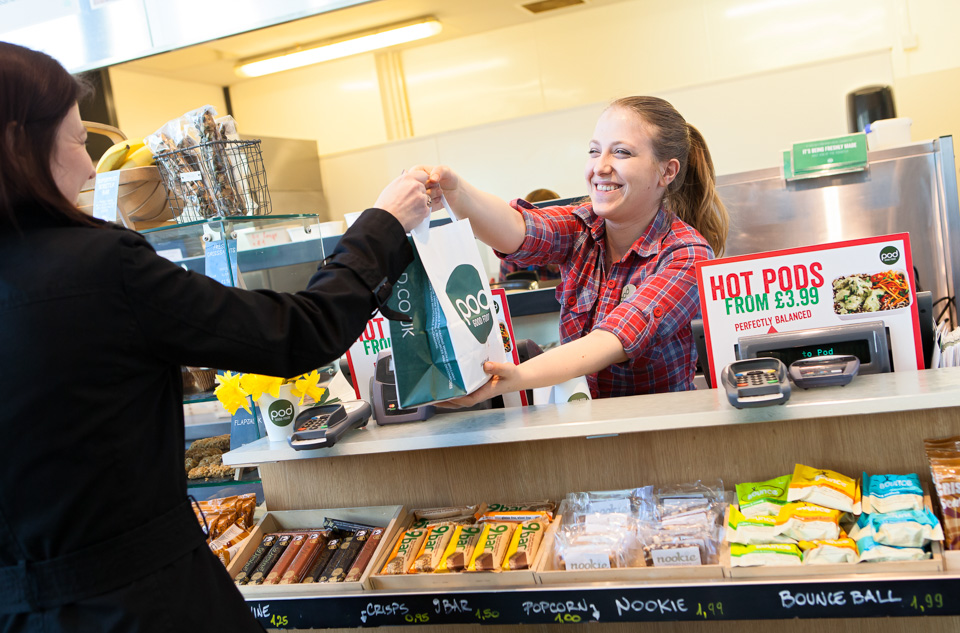
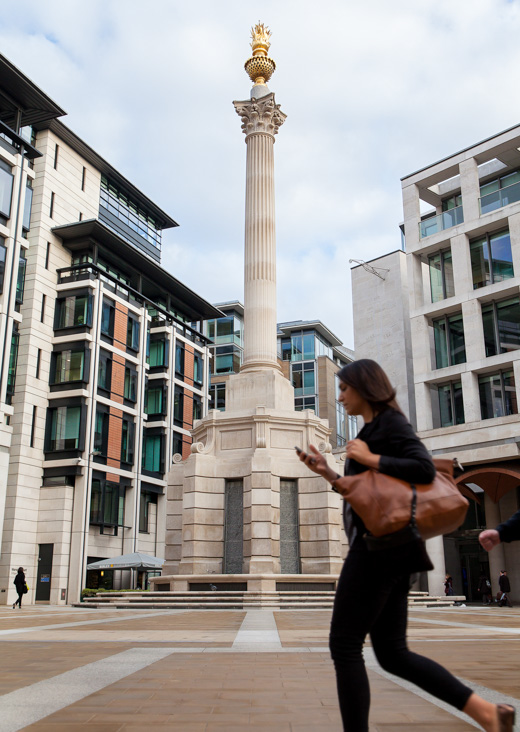
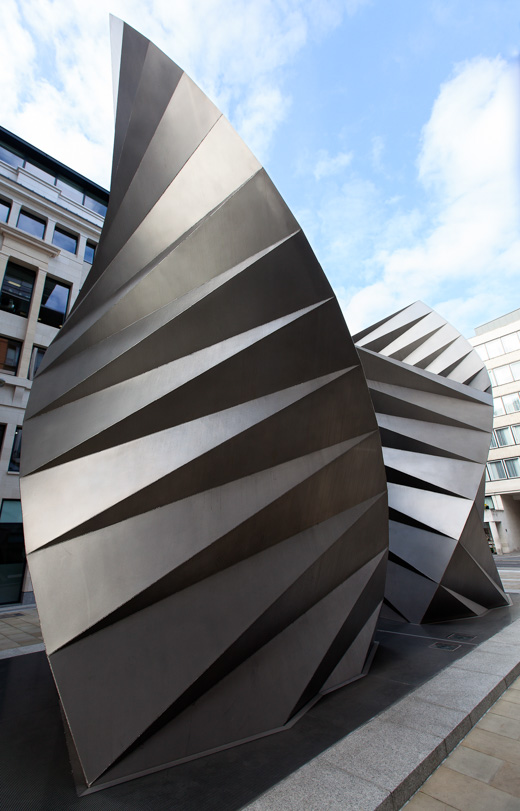
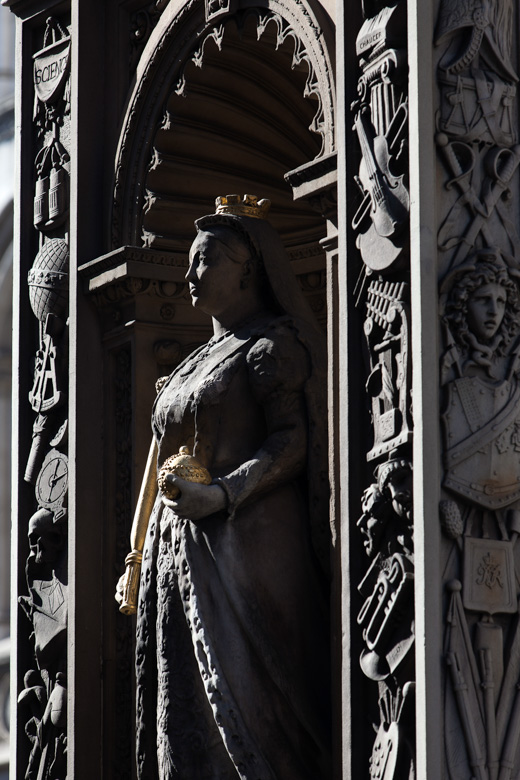
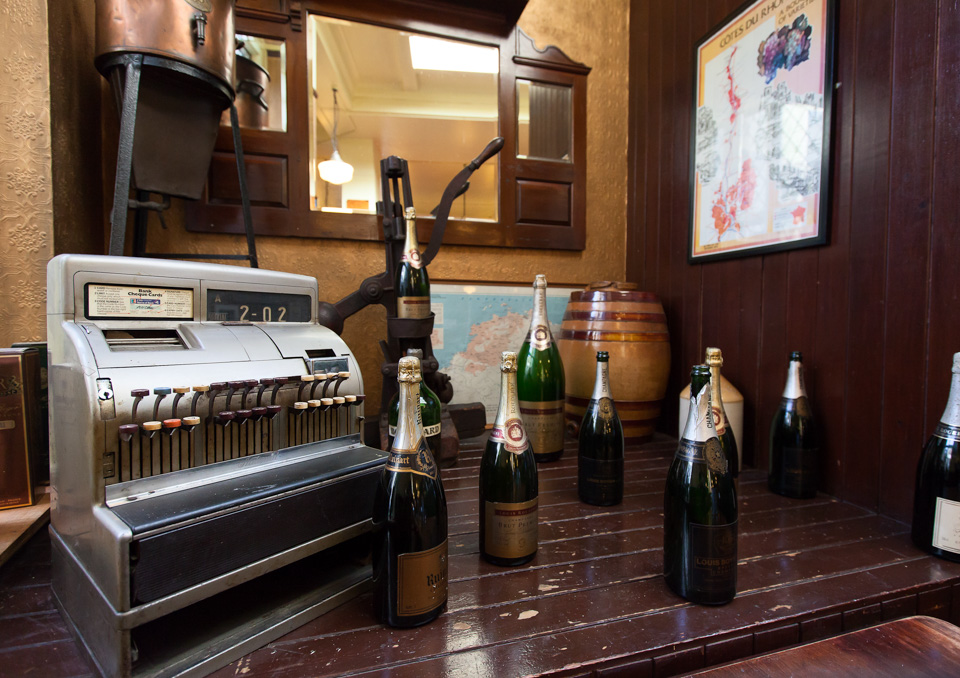
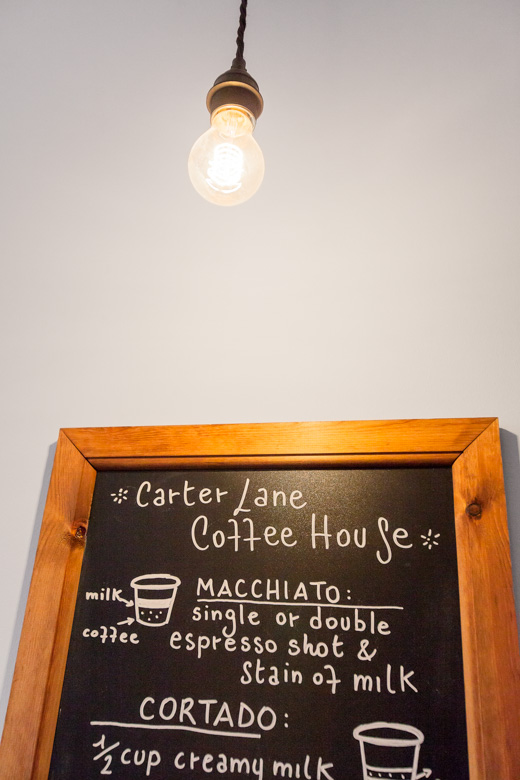

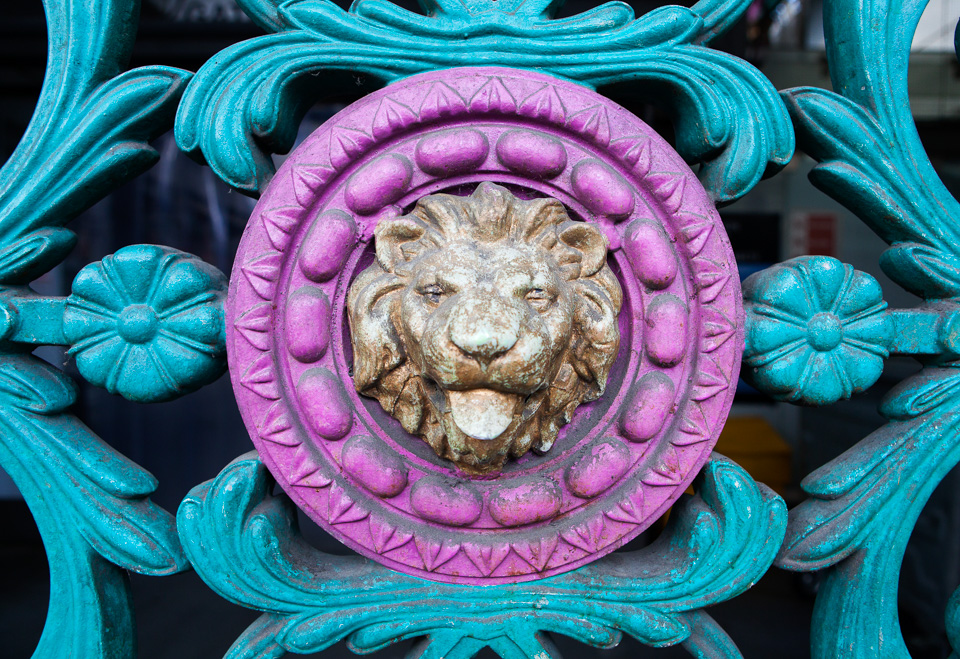
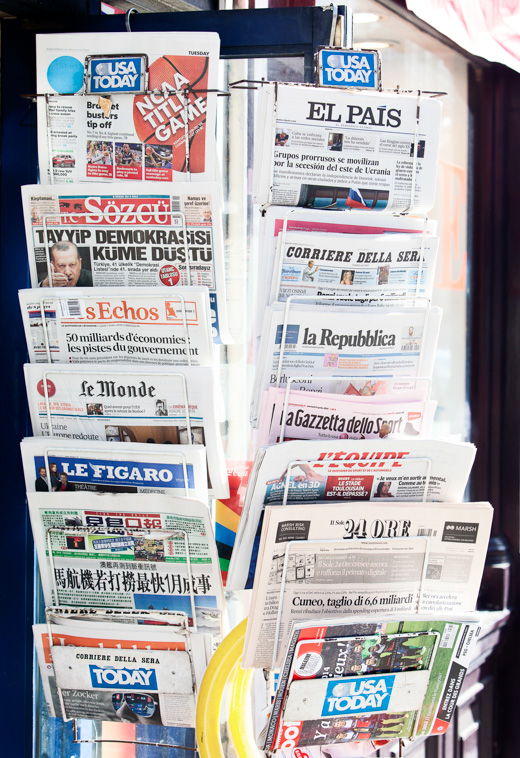
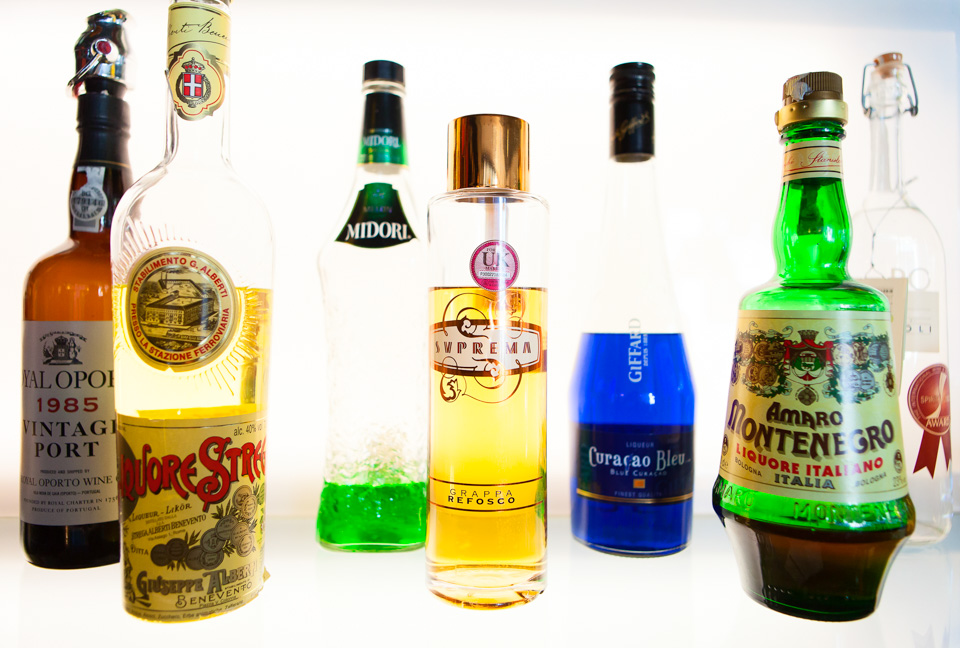
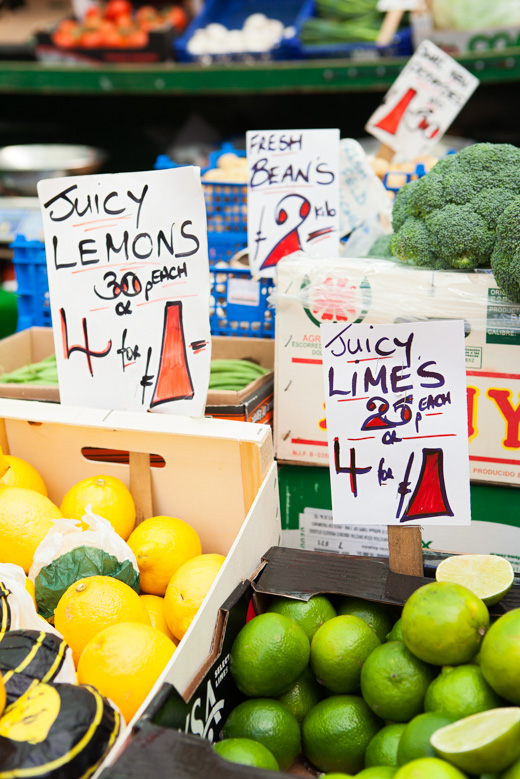
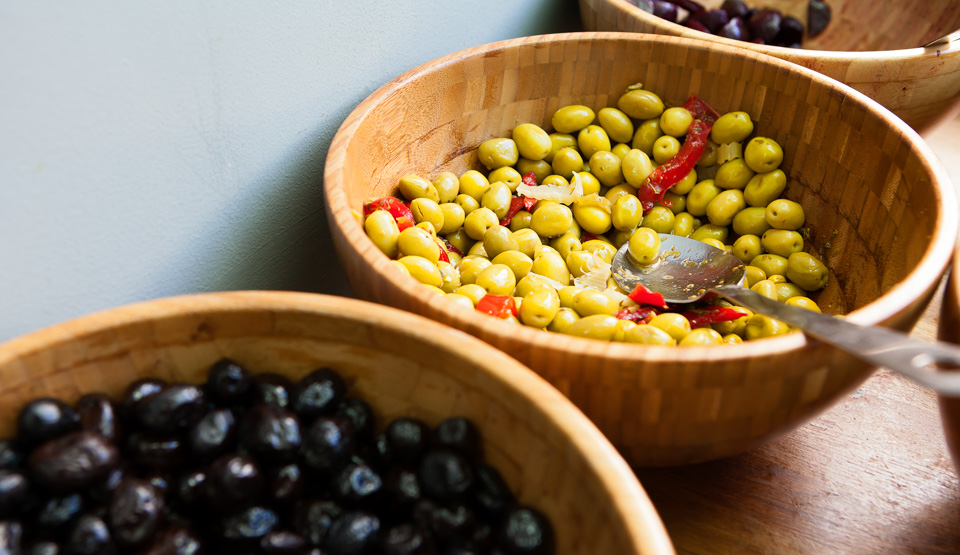
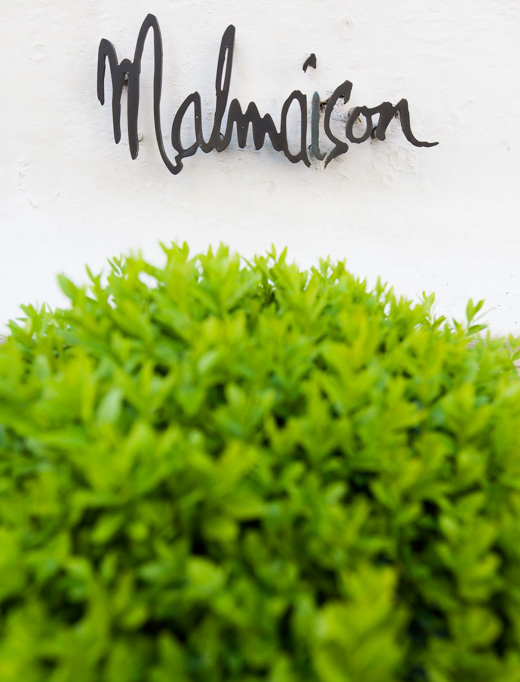
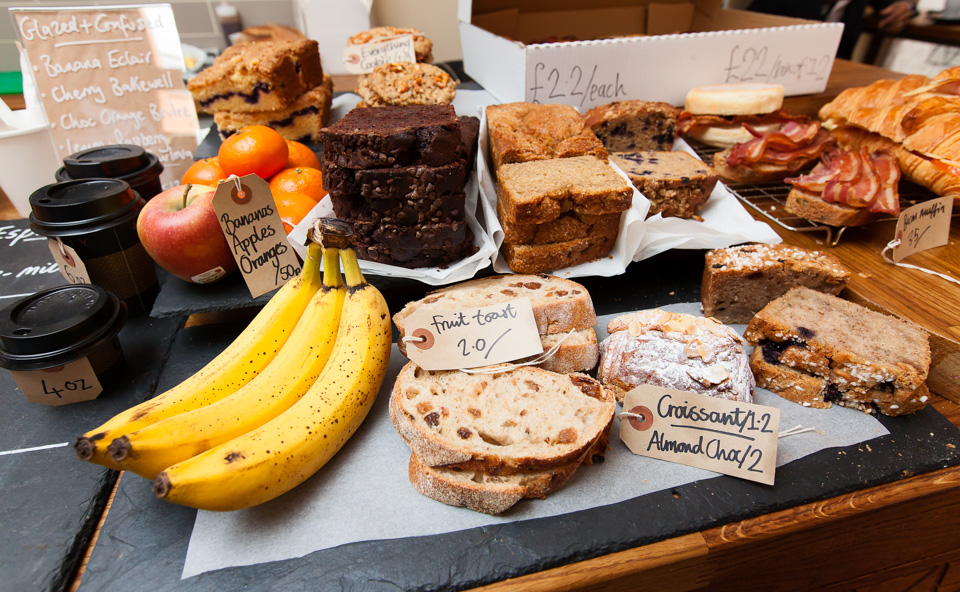
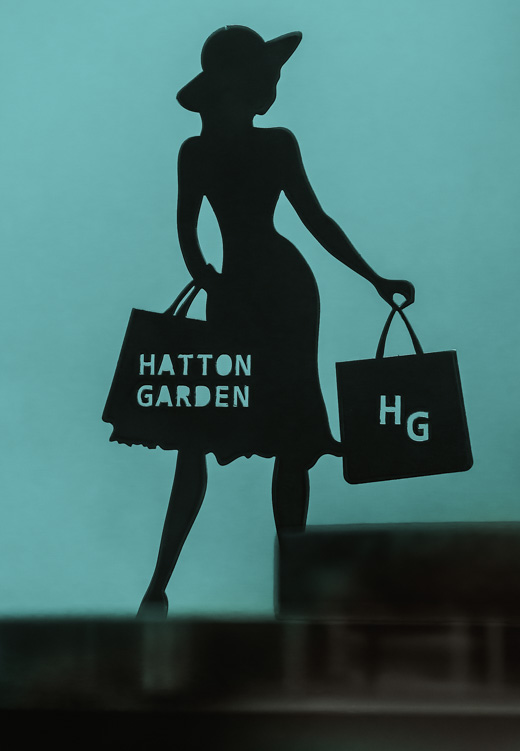
Choosing between photos
A little about the editing process today, and the tough choice we have to make when choosing between two or more shots which are similar. This photo above is in my portrait gallery, and the subject is - possibly - good enough to be worthy of inclusion there, regardless of accompanying gestures (here, the gloved hand framing the eye).
Naturally, it was one of several ideas we tried out. The photo below could equally have been picked: there's little between them, especially since you could argue that the gesture in both is arbitrary. All things being equal, you go with your instinct when making a preference, but often you use more objective details (and in this case, it came down to the hand on the chin overdoing it). But it's not easy, knowing you're consigning a perfectly good, potential portfolio image to a hard drive in a cupboard.
Below are two images from a shoot with Shelly D'Inferno for mobile provider giffgaff:
Neither made the final cut (my preferred versions are here). How to compare them? The top image shows more of Shelley, but the expression doesn't fit. The bottom image makes more contact with a stronger (or at least more apt) expression, but I feel the hands should be more splayed, like claws, and that the clothes are rather lost. And I'm not sure if I like, or dislike, not being able to see her eyes.
The point is this: whenever I have to choose between similar shots which I both like, alarm bells ring. Because if they both have obvious advantages over the other, there may be too much missing from both. It usually means I can't look past the subject to judge them on better criteria, that I just want it to work so badly I'll look past flaws which wouldn't get more than a moment's consideration on any other shoot.
Admittedly, sometimes the subject matter is so good that all other frames of comparison really do lose relevance - so in truth, knowing when this is the situation is the hardest judgement of all.
Create Victoria
I usually like to look up my work when it's been published, especially when it's something I'm proud of or feel particularly invested in.
There's a huge, ongoing development by Land Securities at Victoria. They're currently working on the Nova building. Land Securities are a regular client of mine, and I'd shot this for them a few years ago (I preferred this version) for a press release. It was perhaps two years later when they decided that it could work well with this rather large advertising hoarding at Nova, and wanted to use it again.
Which I then completely forgot about, until I happened to pass it on my way to a shoot some months later.
It was a nice surprise: so much of what we do stays online - it's lovely to see work used in the real world so prominently.
Recent work - July 2016
I've thrown together various bits and pieces from recent months for this week's blog.
Cohn & Wolfe 2
I was asked to shoot more headshots of the team at their offices on Tavistock Square. Alas, they'd lost their lovely feature wall which I used on my first visit, so we kept it neutral. Here are a few:
Corporate self-portraiture
My colleague Annabel Moeller and I photographed each other for the profile page of our corporate portrait business (currently on hold). It was an exquisitely painful and self-conscious process for the both of us - you can't use patter or be objective (essential!) when you know someone. So it was an unusually cold, awkward and purposeful shoot, and not, then, despite being friends, but because of it.
Well, we got through it in the end, and while I (think I) like the shots, I don't feel that they're 'me'. I might normally put this down to the fact that many people dislike both the process and the results of being photographed. But it's simpler than that: we wanted to appear professional, so I shaved, donned a suit, and put on my best smile. Yet I never wear a suit. I never shave. And in real life I'm not even very sure I smile much anyway.
But then, perhaps my opinion is just coloured by my experience of the shoot. Knowing what went into it, from the lighting to the lens, the angles to the processing, I can't help but regard them as formulaic and posed. Or, at least, less natural/sponatenous than they might have appeared without this understanding. I guess some of our judgment on the worth of a photo will always be influenced by context and background, as I've talked about previously.
It was at least useful in terms of putting myself in the shoes of a subject - but for the moment I'll keep using the shot below (by James). It was one of only a few very brief shots I think I recall were taken purely as a lighting test! Hyper-candid portraits - if you will - as I wasn't posing, or expecting to keep them on the card, but merely standing in place to see the effect of his new lights.
Or perhaps I just prefer it because it's been edited with the Awesome Filter Plugin™.
Photivation (two) & Instagram
It's been a few months since I started on Instagram (@alexrumford). I wanted to share some of my experiences.
I still love it - and I'd like to think that my newly-rediscovered enthusiasm has fed into my regular work. I'm looking for images everywhere, all the time. I have tried to post a least once a week, even if it's something timely from my professional or personal archive. After all, the latter contains heaps of photos which would otherwise never have seen the light of day.
I love how everything is on the same platform: award-winning photos are followed by a throwaway shot of a coffee or the view from a hotel window. This is important - there's no pressure to categorise which images you're proud of, which are serious, and which you're merely posting as nothing more than a photo status update. And it's hard to tell the difference: everything is viewed on the same terms, and on its own merits. For myself, some pictures which I really like receive no attention, yet others which I put there to break up a quiet few days get likes.
I've noticed that I'm taking mostly abstracts and details. I'm not sure if this is to do with my own preferences - an abiding and personal interest in what I enjoy about photography (outside of the profession) - or because these shots tend to be, almost by definition, 'found' pictures, suited to the iPhone and a busy life going to different places. Often with just a few moments available to capture them, and without being powerful enough in themselves neither to warrant more than a couple of frames (nor, indeed, very much attention), they suit how many of us treat photography. Rarely do I shoot more than a few frames on my phone of a subject.
And this is interesting for me: one of my guiding principles is that photography ought to be a process and not an event, hence shooting a *lot* of frames in my professional work, and working around the subject.
With Instagram, I try to get to the nub of what I see as quickly and efficiently as I can. In equal parts I'm therefore always unsatisfied with my effort, but also under no pressure to produce anything of worth, or feel like I would. Not to say I don't try to get the shot right, but that (and equally because they're nearly all abstracts and details) it's often more about the feeling than any kind of deeply-considered or committed art, or anything else. If that makes sense.
The adjustments bring them to, and sometimes above, the reason for the photo. They emphasise what it is you meant to say. Again, as with spending time on the actual image, it follows that I then won't post a photo if I find I'm spending too much time messing about: adjustments aren't there to save a bad photo, and they won't. Although they can - and do - hide mediocrity and flaws below layers of contrast, saturation and clarity ("Structure"). It can be hard to tell, sometimes, and perhaps I'm partly guilty.
In my defence, I *never* use any of the named filters. I only use the adjustments, simply so I know what I'm doing. I usually have an idea beforehand of how I see something, and how I'd like it to look. I will (on occasion) go completely the other way, or play with various adjustments, just to see. But obviously most shots fall into a category, and require a specific approach. Anyway, I've noticed I tend to keep the photos fairly natural-looking. Perhaps I have to. Since my feed is dominated by abstracts, I can't have too many which I've pushed so far as to end up into that most-hated abstract category, where the first - or, worse, the only - reaction is, "What is it?"
Finally, I love the search icon, which opens up an endless stream of images to browse. I need to continually refine my feed, as so much is irrelevant and gets rather tedious (I've seen enough B&W images of birds on telephone wires, thanks!) I like to see fresh and unusual work outside of what I typically 'get'. The feature which I'd like to see would be a 'recommend' button. A place for you to list your top suggestion(s) for others to follow.
Follow me! - @alexrumford
From the archives - two
I've nearly finished going through my archives in search of old images which I'd originally dismissed.
As I've said elsewhere, even strong images tend to fade over time, both due to familiarity, and as one develops or improves. But occasionally, I'll come across an old reject which, with a fresh look, away from context - and usually with a different edit - I like much better second-time around.
Out of tens of thousands, only two or three of these I've since dusted off, tidied up, and put up in my galleries. But dozens got close - and were then rejected again.
The photo below is from a series of portraits of musicians (initially all 3- or 4-star rated I expect) but I thought this particular one could be worth another look - was it really only average? Yes. I really wanted it to work - a simple, outdoor shot like this would go well on my website. And there's nothing really wrong with it - and technically and aesthetically it's fine, but something about it's just a bit empty, boring, flat:
No matter how revised or polished a photo is, if it's not working, it's not working. You can do wonders in post-production, but there has to be something in the original which can't be created later, which has nothing to do with adjustments or photoshop.
It's important to be brutally honest and unforgiving when judging an image, but often, subjectivity gets in the way. Usually it's the lengths you knew you'd gone to to achieve the shot - you were so invested in it that it becomes personal.
I think it's about changing your role once you've put the camera down and when you're going through the work on the computer. You have to become an editor - a different set of skills - because as a photographer you can't be objective. And as an editor, this image isn't good enough. Next!
Red Channel
This was a (very quick) portrait of a dancer at East London Dance, where I was covering Collabo. I photographed her during the interval, although I took the photo really for myself: they tend to use the shots from the performers in action. I loved the dark red wall with her makeup:
I knew the makeup was uneven at the time, but I also knew this could be tidied up quickly in photoshop, and extending it across the bridge of her nose using the same technique would be simple enough.
I was wrong.
Playing around with blending modes, brushes and hues (for a lot longer than I'm prepared to admit), it still didn't look right. And no matter what I did, it was ever so very slightly asymmetrical.
I was beaten. So - as I always do when I have a PS problem - I phoned my friend James for The Answer. He told me that yes, it could be done - but it wasn't as anywhere near as straightforward as I'd thought, and I'd been approaching it wrongly anyway.
What do do... I liked the picture, but didn't have the patience to start again. Well, I'd been approaching it with the belief that was all about the makeup, that it depended on it.
But what if it didn't?
Selecting the red channel (less than three seconds' work) pretty much took care of the issue in a couple of clicks, producing a rather different picture. I might yet hire James to take care of it as I'd envisaged it, but in the meantime I'm happy with the result:
28 days later
I'm off this evening to Secret Cinema who are presenting "28 days later". So, instead of posting what I've been doing this week, here's a photo of a zombie from a couple of years ago.
Breaks and burns
These two sets, shot for the British Red Cross, were for a series of pamphlets giving First Aid advice. Alas, the other sets are less blog-friendly: someone who'd had far too much to drink; a stroke; a heart attack; and a drug overdose.
War Horse - The Final Farewell
The curtain call of the very last performance of War Horse at the New London Theatre. It has run for eight years and won 25 major awards. Based on the novel by Michael Morpurgo (pictured), it tells the story of Joey, sequestered into the British cavalry during World War One, and his owner, Albert, who enlists to bring him safely home.
The Jersey Boys
For the first time since the show opened in 2008, all of the Four Seasons have been replaced. I was commissioned to shoot the new cast in rehearsal at the Piccadilly Theatre.
-
June 2025
- Jun 19, 2025 The forever purge
- Jun 19, 2025 University prospectus
- Jun 11, 2025 Recent work - June 2025
- Jun 6, 2025 On Looking
-
January 2025
- Jan 21, 2025 The photographer's dictionary
-
November 2024
- Nov 19, 2024 Recent work - November 2024
-
September 2024
- Sep 17, 2024 Recent work - September 2024
-
July 2024
- Jul 4, 2024 Mean Girls
-
May 2024
- May 28, 2024 Wakehurst
- May 20, 2024 Graduation
-
April 2024
- Apr 16, 2024 Recent work - April 2024
-
January 2024
- Jan 22, 2024 Recent work - January 2024
- Jan 9, 2024 Long live the local
-
October 2023
- Oct 13, 2023 CBRE
- Oct 4, 2023 Recent work - October 2023
-
September 2023
- Sep 22, 2023 Seeing past the subject (2)
-
April 2023
- Apr 17, 2023 Tinder
- Apr 12, 2023 Recent work - April 2023
-
February 2023
- Feb 7, 2023 Will AI do me out of a job?
-
December 2022
- Dec 12, 2022 Freelance life and other animals
-
November 2022
- Nov 4, 2022 Recent work - November 2022
-
July 2022
- Jul 26, 2022 Recent work - July 2022
- Jul 25, 2022 SOAS
-
May 2022
- May 30, 2022 Ebay
- May 18, 2022 Physiotherapy
- May 4, 2022 Vertex
- May 4, 2022 Roche
-
January 2022
- Jan 6, 2022 Recent work - December 2021
- Jan 5, 2022 Prevayl
-
December 2021
- Dec 17, 2021 The day the hairdressers opened
-
December 2020
- Dec 15, 2020 SOAS - postgraduate prospectus
- Dec 7, 2020 Online teaching
-
October 2020
- Oct 11, 2020 Gratitudes
- Oct 5, 2020 GoFundMe Heroes
-
September 2020
- Sep 24, 2020 Headshots: why we need them, and why we don't like them
- Sep 15, 2020 From the archives - seven
- Sep 10, 2020 Recent work - September 2020
-
February 2020
- Feb 13, 2020 Mootral
-
November 2019
- Nov 7, 2019 Biteback 2030
-
October 2019
- Oct 2, 2019 Guinness World Records
-
September 2019
- Sep 16, 2019 B3 Living
-
July 2019
- Jul 22, 2019 Recent work - July 2019
- Jul 19, 2019 From the archives - six
-
April 2019
- Apr 15, 2019 Recent work - April 2019
-
March 2019
- Mar 12, 2019 International Women's Day
-
February 2019
- Feb 4, 2019 Recent work - February 2019
-
January 2019
- Jan 17, 2019 Four photographs
-
December 2018
- Dec 19, 2018 Handy gadgets and where to find them
- Dec 10, 2018 From the archives - five
-
November 2018
- Nov 26, 2018 How to compose photographs
- Nov 5, 2018 Recent work - November 2018
-
October 2018
- Oct 17, 2018 How to edit photographs in Instagram
- Oct 8, 2018 Out with the old
- Oct 4, 2018 Recent work - October 2018
- Oct 1, 2018 A little learning is a dangerous thing
-
September 2018
- Sep 12, 2018 From the archives - four
-
August 2018
- Aug 16, 2018 Recent work - August 2018
- Aug 15, 2018 I don't follow you
- Aug 6, 2018 Cookpad
-
June 2018
- Jun 7, 2018 Monks & Marbles
-
May 2018
- May 23, 2018 Netflix & Woof
- May 21, 2018 Best of Instagram
-
April 2018
- Apr 24, 2018 Standard Chartered Bank
-
March 2018
- Mar 16, 2018 Corporate self-portraiture (two)
- Mar 8, 2018 International Women's Day
-
February 2018
- Feb 9, 2018 Winter swimming
-
January 2018
- Jan 23, 2018 From the archives - three
- Jan 16, 2018 2017 in pictures
-
December 2017
- Dec 6, 2017 Toyota Mobility Foundation
-
November 2017
- Nov 24, 2017 Corporate work
-
October 2017
- Oct 31, 2017 Recent work - October 2017
- Oct 13, 2017 Pfizer - Protecting our Heroes
-
September 2017
- Sep 21, 2017 Campaign portraits
-
August 2017
- Aug 22, 2017 Wyborowa vodka
- Aug 1, 2017 Vauxhall animation
-
July 2017
- Jul 31, 2017 Tanguera
- Jul 20, 2017 Take your parents to work
-
June 2017
- Jun 22, 2017 Recent work - June 2017
-
May 2017
- May 22, 2017 Mannequins (female)
- May 16, 2017 Scott Reid
- May 9, 2017 Huawei - The New Aesthetic
-
April 2017
- Apr 24, 2017 S.H.O.K.K.
- Apr 21, 2017 Battle
- Apr 18, 2017 Ashburton
- Apr 11, 2017 Victoria Jeffrey
-
March 2017
- Mar 30, 2017 Parkour Generations
- Mar 27, 2017 War Horse in Brighton
- Mar 23, 2017 Rock'n'roll
- Mar 20, 2017 Jane Eyre
- Mar 15, 2017 Patricia Cumper
- Mar 8, 2017 1000 Pieces Puzzle
-
January 2017
- Jan 23, 2017 Framing 101
- Jan 10, 2017 View from the gods
-
December 2016
- Dec 14, 2016 Studio Fractal
-
November 2016
- Nov 29, 2016 Musician
- Nov 21, 2016 Gavin Turk
- Nov 10, 2016 While I was waiting...
- Nov 3, 2016 Canvas
-
October 2016
- Oct 28, 2016 Rishi Khosla
- Oct 18, 2016 Sadlers Wells workshop
- Oct 11, 2016 Rose Bruford
- Oct 6, 2016 Making lemonade at Harrods
-
September 2016
- Sep 28, 2016 Money Mentors
- Sep 21, 2016 Instawalks
- Sep 12, 2016 Mannequins (m)
-
August 2016
- Aug 23, 2016 Tomorrow's People
- Aug 17, 2016 Mousetrap
-
July 2016
- Jul 28, 2016 Property brochure
- Jul 19, 2016 Choosing between photos
- Jul 8, 2016 Create Victoria
- Jul 1, 2016 Recent work - July 2016
-
June 2016
- Jun 21, 2016 Cohn & Wolfe 2
- Jun 10, 2016 Physical Justice
-
May 2016
- May 31, 2016 Corporate self-portraiture
- May 23, 2016 Photivation (two) & Instagram
- May 16, 2016 From the archives - two
- May 4, 2016 Red Channel
-
April 2016
- Apr 28, 2016 GBG corporate shoot
- Apr 21, 2016 28 days later
- Apr 14, 2016 Colgate
- Apr 6, 2016 Breaks and burns
-
March 2016
- Mar 31, 2016 Mixed bag
- Mar 22, 2016 Pearson
- Mar 15, 2016 War Horse - The Final Farewell
- Mar 8, 2016 The Jersey Boys
- Mar 1, 2016 Sky Garden
-
February 2016
- Feb 23, 2016 Avada Kedavra!
- Feb 17, 2016 Bees
- Feb 8, 2016 From the archives
-
January 2016
- Jan 27, 2016 Kaspersky - Alex Moiseev
- Jan 19, 2016 Melanie Stephenson
- Jan 11, 2016 Photivation
-
December 2015
- Dec 28, 2015 Noma Dumezweni
- Dec 17, 2015 Creating a portfolio
- Dec 8, 2015 Victoria
- Dec 1, 2015 Collabo
-
November 2015
- Nov 25, 2015 Danny Sapani
- Nov 17, 2015 People, Places and Things
- Nov 10, 2015 Romain Grosjean
- Nov 2, 2015 Egosurfing
-
October 2015
- Oct 23, 2015 The Curious Incident of the Dog in the Night-Time
- Oct 13, 2015 This Girl Can
- Oct 1, 2015 Ratings are overrated
-
September 2015
- Sep 23, 2015 Indra
- Sep 15, 2015 Seeing past the subject
- Sep 8, 2015 Black and white (two)
- Sep 2, 2015 The decisive moment (two)
-
August 2015
- Aug 25, 2015 British Gas
- Aug 19, 2015 Problem solving vs creativity
- Aug 12, 2015 Cohn & Wolfe
- Aug 5, 2015 James
-
July 2015
- Jul 31, 2015 Photographing the photographer
- Jul 28, 2015 Black and white
- Jul 20, 2015 Comedian
-
December 2014
- Dec 15, 2014 2014 in pictures
-
January 2014
- Jan 9, 2014 2013 in pictures
-
February 2013
- Feb 10, 2013 It's not the camera
-
December 2012
- Dec 31, 2012 2012 in pictures
-
April 2012
- Apr 30, 2012 What the job is - or, "Dealing with lemons"
- Apr 13, 2012 Your holiday photos aren't rubbish
-
May 2011
- May 13, 2011 Showing the world differently
- November 2010
-
October 2010
- Oct 9, 2010 Seeing pictures






